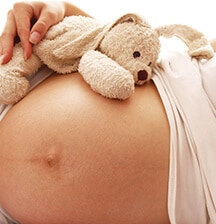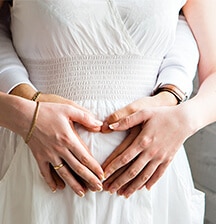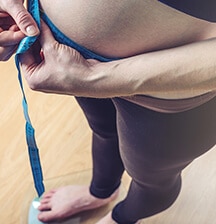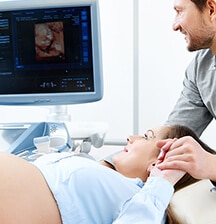
A weakened pelvic floor can put a serious dampener (literally) on many activities. If you are pregnant, have recently had a baby or, in fact, if you have ever had a baby, you are more at risk of pelvic floor problems.
The pelvic floor is referred to as the ?core’, and as a woman, it is central to your body’s wellbeing. It is basically a platform of muscles that supports and controls your bladder, bowel and uterus. They also help support your spine, and they play an important role in sexual sensation and function.
common signs of pelvic floor problems:
- accidentally leaking urine when exercising, playing sport, laughing, coughing or sneezing
- frequently needing to go to the toilet
- not making it to the toilet in time
- accidentally passing wind
- painful sex or poor sensation or leaking during sex.
- a prolapse which may be felt as a bulge in the vagina, or a feeling of heaviness, discomfort, pulling or dropping.
what to do
Low impact exercises such as walking, swimming, low intensity water aerobics, pilates and yoga help promote core strength but you will need to do specific pelvic floor training as well.
once you’ve identified your pelvic floor muscles, you should do the following:
- Aim to lift your muscles quickly and strongly
- Hold from 1-10 seconds, then relax the muscles completely
- Rest in between each lift from 3-5 seconds
- Repeat 8-12 times (this is one set)
- Do three sets per day
a smart option
SmartBalls have been designed to tone your pelvic floor muscles as you go about your daily activities. They are weighted balls, made from medical grade materials and are worn vaginally (with a little lubricant) as you go about your daily activities. Regular use of SmartBalls can strengthen your pelvic floor muscles, bring it back to shape, and correct and prevent bladder weakness.
what not to do
Some exercises place more stress on the pelvic floor than others. High impact and cardio exercises such as running, jumping, star jumps, skipping, and sports such as tennis, netball, hockey, touch rugby can all place downward pressure on the pelvic floor and will weaken rather than strengthen the muscles. There are some safe resistance exercises that can be done at the gym (such as dumbbell exercises on a Swiss ball, seated exercises such as shoulder press, rows, bicep curls), but be careful to avoid any heaving lifting or straining. Also avoid abdominal exercises such as crunches, sit ups and curl ups. Exercises such as these can worsen existing problems.
If, after 3-6 months, you are still having problems, you should seek help from a women’s health physiotherapist or continence advisor who can design an individual training programme for you.
Useful websites: www.continence.org.nz and www.pelvicfloor.co.nz
For further information or advice, phone the Continence Helpline in confidence: 0800 650 659 (9am ? 4pm)
A question of pregnancy
If you are pregnant, it’s never too early (or too late) to make important lifestyle changes such as cutting out alcohol, nicotine, sushi and caffeine. And if you are not already doing so, you should take prenatal vitamins; as well as checking with your GP if you are taking any prescription medicines.
So what are some of the early signs of pregnancy that you should be aware of?
- Fatigue
Extreme, unexplainable fatigue is probably the most common sign of early pregnancy. And experts warn not to treat fatigue with excessive caffeine if there is a chance you may be pregnant. (Recommended caffeine limits vary, but most agree a couple of cups per day is okay.) Instead, listen to your body, take it easy, and try to stay well-rested.
- Food aversions
If opening the refrigerator makes you gag, and if you can’t even walk past the local takeaway shop without retching, you could be pregnant. Many women report that such intense food aversions are one of the first signs of early pregnancy. It’s believed
these can be caused by rising levels of beta-hCG hormone. - Sensitivity to smells
Scents that were never pleasant (like cigarette smoke) and even ones that were pleasing (like your perfume) can also make you queasy during pregnancy’s early stages.
- Nausea and vomiting
Nausea and vomiting can be an early indication that you’re pregnant. However, in most cases, the nausea and vomiting will likely pass by 12 weeks. Try eating offensively as opposed to defensively ? the key is not to let your stomach get too empty. Keep healthy snacks, such as dry crackers, handy ? by the bedside, in the car, in your handbag.
- Breast swelling and tenderness
Some women find breast changes (swelling and tenderness) are one of the very first signs. Make sure you get a comfortable, well-fitting bra to ease the tenderness and keep them supported.
- Frequent urination
In early pregnancy, the uterus grows and pushes on the bladder, triggering the urge to urinate more often. This sensation usually goes away by the second trimester ? but not for long because in your third trimester, your enlarged uterus and the pressure of the fetus’s head push onyour bladder.
These early signs of pregnancy are also the symptoms of other things, including premenstrual syndrome (PMS). If you have regular periods, the most reliable early sign of pregnancy is your first missed period.
The bottom line? If you think you might be pregnant, take an at-home test or make an appointment with your GP as soon as possible.
hey baby, did you know ” ?
- Newborns have no kneecaps: At birth, babies do not have kneecaps. Rather they have a structure of cartilage that resembles kneecaps. They usually don’t develop them fully until after six months.
- Newborns can’t cry: They can scream and yell for what they want or need, but newborns can’t technically cry. Tears can’t actually be created or released until after about three weeks. In some cases, it’s not unusual for babies not to shed tears for four or five months.
- Newborns have more bones: When babies are born, they have 300 bones. Adults have 206. Bones fuse together during growth to come up with the new, lesser number.
- Birthmarks are the rule, not the exception: If your newborn has a birthmark, this is actually normal. Around 80% of all babies are born with some form of mark. Stork bites and port wine stains are among the most common.








